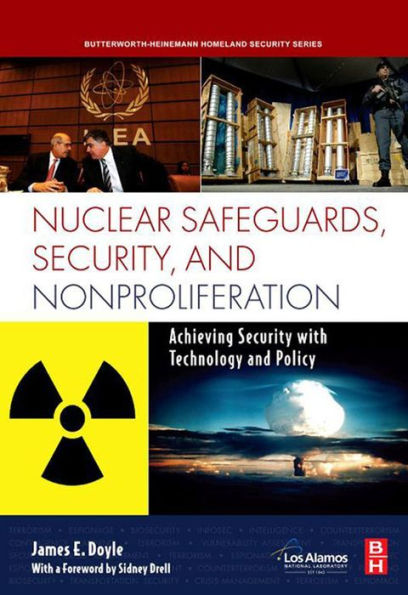Nuclear Safeguards, Security and Nonproliferation: Achieving Security with Technology and Policy
With an increase of global security concerns over potential terrorist acts, the threat of WMDs, and increasing political issues with nations seeking nuclear capability, the need to track, detect, and safeguard nuclear material globally has never been greater. Nuclear Safeguards, Security and Nonproliferation is a comprehensive reference that covers cutting-edge technologies used to trace, track, and safeguard nuclear material. It is a contributed volume with sections contributed by scientists from leading institutions such as Los Alamos National Labs, Sandia National Labs, Pacific Northwest Nuclear Labs, and Texas A&M University, and the Monterey Institute of International Studies. The book is divided into 3 sections and includes 30 chapters on such topics as - the security of nuclear facilities and material, the illicit trafficking of nuclear materials, improvised nuclear devices, how to prevent nuclear terrorism. International case studies of security at nuclear facilities and illegal nuclear trade activities provide specific examples of the complex issues surrounding the technology and policy for nuclear material protection, control and accountability. Specific cases include analysis of the timely issues in the nuclear programs of countries such as North Korea, Iran, and Kazakstan among others. Nuclear Security is a must-have volume for the dozens of private and public organizations involved in driving Homeland Security, domestic, and international policy issues relating to nuclear material security, non-proliferation, and nuclear transparency. - Written by some of the world's top scientists including members of the Nuclear Division of Los Alamos National Labs (U.S.) - A timely discussion of current international nuclear security issues includes case studies on Iraq, Iran and North Korea - Book takes a global perspective on nuclear security and non-proliferation detailing the little-known real-world technologies used to secure, detect and track nuclear material
1111451184
Nuclear Safeguards, Security and Nonproliferation: Achieving Security with Technology and Policy
With an increase of global security concerns over potential terrorist acts, the threat of WMDs, and increasing political issues with nations seeking nuclear capability, the need to track, detect, and safeguard nuclear material globally has never been greater. Nuclear Safeguards, Security and Nonproliferation is a comprehensive reference that covers cutting-edge technologies used to trace, track, and safeguard nuclear material. It is a contributed volume with sections contributed by scientists from leading institutions such as Los Alamos National Labs, Sandia National Labs, Pacific Northwest Nuclear Labs, and Texas A&M University, and the Monterey Institute of International Studies. The book is divided into 3 sections and includes 30 chapters on such topics as - the security of nuclear facilities and material, the illicit trafficking of nuclear materials, improvised nuclear devices, how to prevent nuclear terrorism. International case studies of security at nuclear facilities and illegal nuclear trade activities provide specific examples of the complex issues surrounding the technology and policy for nuclear material protection, control and accountability. Specific cases include analysis of the timely issues in the nuclear programs of countries such as North Korea, Iran, and Kazakstan among others. Nuclear Security is a must-have volume for the dozens of private and public organizations involved in driving Homeland Security, domestic, and international policy issues relating to nuclear material security, non-proliferation, and nuclear transparency. - Written by some of the world's top scientists including members of the Nuclear Division of Los Alamos National Labs (U.S.) - A timely discussion of current international nuclear security issues includes case studies on Iraq, Iran and North Korea - Book takes a global perspective on nuclear security and non-proliferation detailing the little-known real-world technologies used to secure, detect and track nuclear material
116.0
In Stock
5
1

Nuclear Safeguards, Security and Nonproliferation: Achieving Security with Technology and Policy
624
Nuclear Safeguards, Security and Nonproliferation: Achieving Security with Technology and Policy
624
116.0
In Stock

Product Details
| ISBN-13: | 9780080888118 |
|---|---|
| Publisher: | Butterworth-Heinemann |
| Publication date: | 04/08/2011 |
| Sold by: | Barnes & Noble |
| Format: | eBook |
| Pages: | 624 |
| File size: | 8 MB |
About the Author
What People are Saying About This
From the B&N Reads Blog
